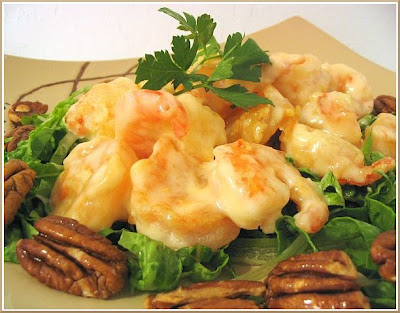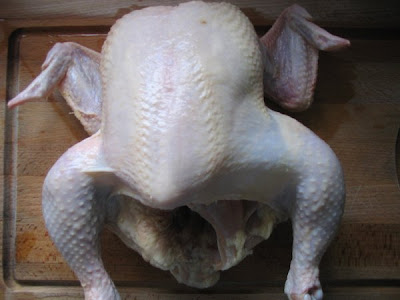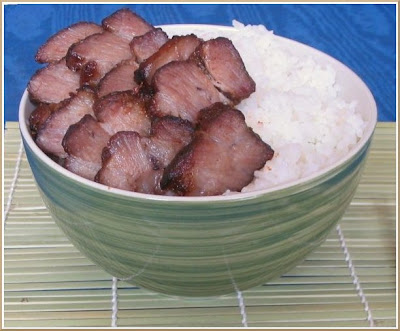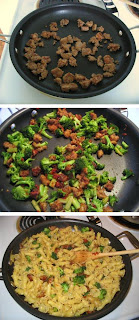
Spring is my favorite season. It marks the end of the long and dreary Seattle winter and welcomes an abundance of fresh fruits and vegetables. The other day I picked up
These strawberry lemon bars were inspired by strawberry lemonade. If a regular lemon bar is like lemonade, I wondered if I could achieve the same delicate pink color and interplay of strawberry and lemon flavors of strawberry lemonade in a lemon bar. Originally, the plan was to mix strawberry puree with the lemon bar filling. Then Steven asked if I was going to make strawberry swirls, like swirls in cheesecakes. I thought, ya know that’s not a bad idea! It definitely made more sense than mixing it all together because if I mixed the strawberries into the filling I would get orange not a delicate pink due to the very yellow egg yolks. But of course ideas always sound really good on paper or in my head but reality can prove to be different. I envisioned picture perfect swirls of dark red in a sea of bright yellow. When I started making the lemon bars, I realized that the filling is actually really thin. So when I plopped the strawberry puree in, they didn’t exactly swirl like I planned. They ended up just floating around on top of the filling. Hmm... Oh well! So I ended up haphazardly swishing it around. Sure they aren’t as pretty as I pictured them but the important thing is that they taste good! Just like a glass of strawberry lemonade. Mission accomplished!

Strawberry (Swirl/Swish) Lemon Bars
(Adapted from Cook's Illustrated Lemon Bar recipe)
Crust
7/8 C all-purpose flour
1/3 C confectioner’s sugar
2 Tbsp cornstarch
A pinch of salt
6 tbsp unsalted butter, cold and cut into 1/2 in cubes
Lemon Filling
2 large eggs
2/3 C granulated sugar
1 1/2 Tbsp flour
1/4 C lemon juice, from 2 lemons
2 tsp lemon zest, from 2 lemons
2 Tbsp milk
A pinch of salt
Strawberry Puree
1 C chopped strawberries
1 – 2 Tbsp granulated sugar, depending on how sweet the berries are
Mix the chopped strawberries with sugar and set aside to macerate for about 30 minutes. I used about 1 1/2 tbsp of sugar.
Add the flour, confectioner’s sugar, cornstarch, and salt in a food processor. Blend the ingredients together for a few seconds to mix evenly. Then add the pieces of butter and pulse until the mixture is pale yellow and looks like coarse cornmeal. If you don’t have a food processor you can use a fork, a pastry blender, or even your hands to cut the butter into the flour. Cook’s Illustrated recommended freezing the butter then grating it into the flour and using your hands to rub the pieces between your fingers.
Line a 8 x 8 in baking pan with a sheet of parchment. Press the crust mixture into an even 1/4 in layer in the pan bottom and about 1/2 in up the sides. Chill in the fridge for 30 minutes.
 When you finish making the crust the fruit should almost be done. Blend the strawberries in a food processor (for a few seconds) or mash with a fork until there are no large chunks. Cook over medium heat for about 5 minutes until thick. We need to cook out some of the moisture in the puree so it gets more syrupy. Set aside to cool.
When you finish making the crust the fruit should almost be done. Blend the strawberries in a food processor (for a few seconds) or mash with a fork until there are no large chunks. Cook over medium heat for about 5 minutes until thick. We need to cook out some of the moisture in the puree so it gets more syrupy. Set aside to cool.Preheat the oven to 350ºF and after the crust finishes chilling, bake for 20 minutes, until golden brown.
You can prepare the filling while you bake the crust. Whisk the eggs, sugar, flour and salt in a bowl until the sugar dissolves. Then whisk in the lemon juice, zest, and milk.
Reduce the oven temp to 325ºF, pour the filling into the crust. Drop spoonfuls of the strawberry mixture on the surface. Use spoon or knife swirl/swish the strawberry puree into the filling.
Bake for about 20 - 22 minutes, until the filling feels firm when touched lightly.
Cool to room temp, dust with confectioner’s sugar and serve.
I made these for Meeta’s Monthly Mingle, A Taste of Spring.










































